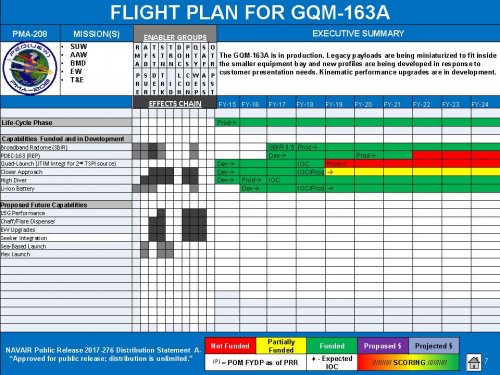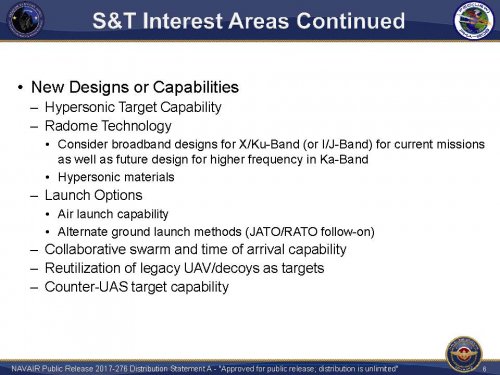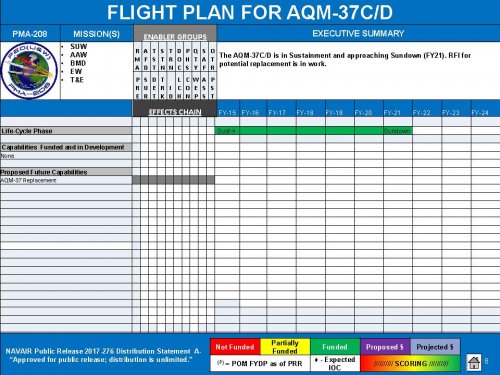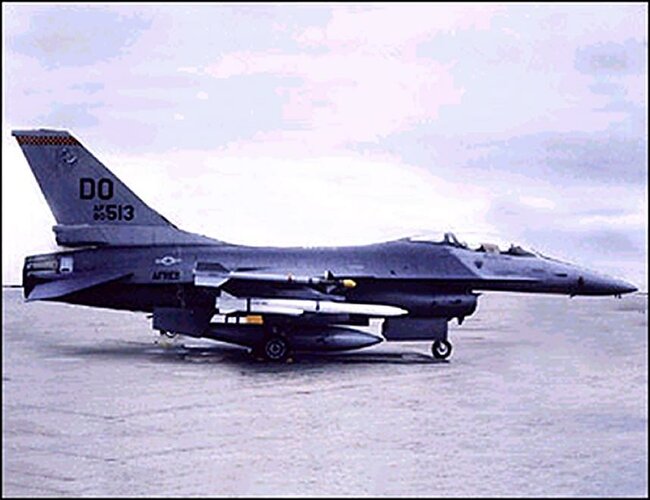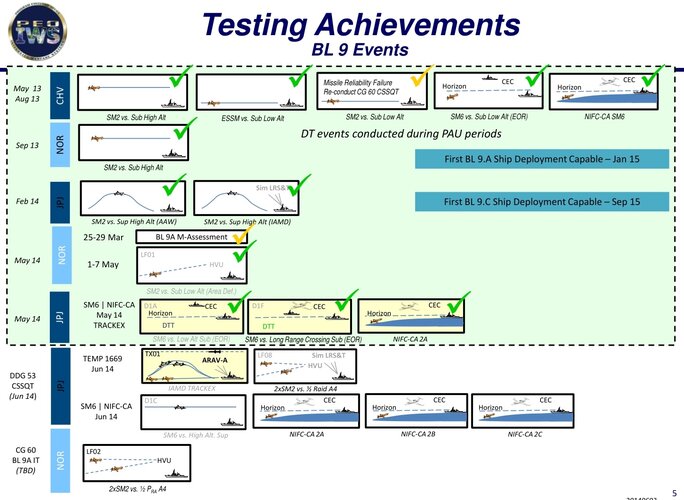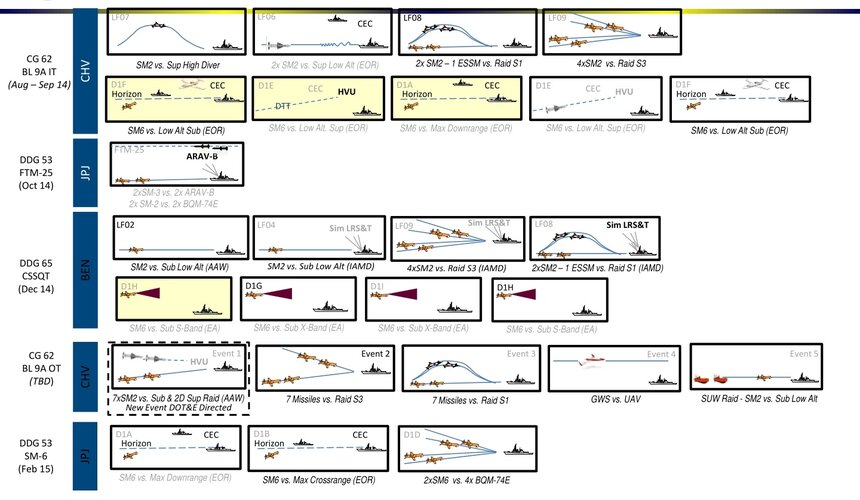The Naval Air Systems Command, PMA-208 (Aerial Target and Decoy Systems), is conducting market research to identify qualified, experienced, and interested potential sources for a supersonic aerial target system capable of high altitude cruise, lower altitude cruise, tactical ballistic and lofted missile profiles. Solutions that can satisfy the capabilities of interest (listed later in document) would be considered for replacement of the air launched AQM-37 as well as other future supersonic target capabilities. The purpose of this Request for Information (RFI) is for the Government to gain insight into existing products within industry and the ability of industry to modify existing products or to develop new items providing the capabilities of interest discussed below. This RFI also provides industry with a better understanding of the capabilities that PMA-208 is considering for the United States Navy as it establishes its future technologies roadmap. This market research is focused on concepts that currently exist or would be available starting in the Government FY2019 timeframe.
2. Responses to this market research notification are due no later than 60 business days from this notice.
3. This notice is issued solely for information and planning purposes only and shall not be considered as an invitation for bid, request for quotation, Request For Proposal (RFP), or as an obligation on the part of the Government to acquire any products or services. Your response to this notice is strictly voluntary and will be treated as information only. No entitlement to payment of direct or indirect costs or charges by the Government will arise as a result of contractor submission of responses to this notice or the Government use of such information. Not responding to this Sources Sought Notice does not preclude participation in any future RFP, if any is issued. If a solicitation is released, it will be synopsized on the Federal Business Opportunities (FedBizOpps) website (https://www.fbo.gov).
4. Solely at the Government's discretion, vendors responding to this notice may be allowed time to brief their responses to the Government on a case-by-case basis.
5. Desired Capabilities:
a. Speed: Minimum of 2.0M.
b. Altitude: Capable of profiles ranging from sea skimming to 70k ft or greater.
c. Range: 160 nm.
d. Maneuvers: Ability to program unique flight profiles consisting of turns, dives, dive pullout, spiral and/or weave maneuvers in the terminal phase. Precision onboard guidance/navigation/control system required.
e. Dive Angles: Up to 80 degrees.
f. Payloads: Additional space, weight and power capacity to support seeker or emitter simulation payloads. Modular/plug and play interface for payloads.
g. Telemetry: Signal range to 160nm to include Time Space Position Information (TSPI) and vehicle health.
h. Location and Identification: AN/DPN-90 transponder system or other transponder with similar capability.
i. Scoring: Scalar scoring (e.g. AN/DSQ-50A).
j. Flight Termination: Must be capable of achieving RCC-319 compliance. A minimized debris field is desired.
6. Information Sought:
a. Identify available supersonic target solutions that provide all or some of the above capabilities.
b. Launch Method: Air and/or Ground. Air launched vehicles should be compatible with existing RDT&E or operational DoD aircraft (e.g. F-16, FA-18).
c. End Point Accuracy: +/- 100 feet Circular Error Probable (CEP).
d. Identify baseline and augmented Radar Cross Section parameters, if known.
e. Identify artifacts and a rough scope of effort required to generate artifacts to support system, ground and flight safety certifications for the target system, if known.
f. Identify any artifacts available that would assist 3rd party integration of the target into an aircraft platform or ground based launcher.
g. Identify corporate roadmap (to include upgrades, sustainability, etc.) for the target solution.
h. Identify any vendors and relationships involved in the target system and relevant qualifications.
i. Identify software design philosophy/approach/practices, indicating familiarity with developing aviation and safety critical software.
j. Identify preferred procurement method (acquisition & sustainment) and, if applicable, any license quantity pricing and measure (example: 1-10, 11-50, 51-100, etc.)
k. Identify Rough Order of Magnitude (ROM) cost & schedule estimate to include any major activities (i.e. Non-Recurring Engineering, Test, etc.). NOTE: This ROM cost & schedule estimate is NOT binding and will ONLY be used for planning purposes.
https://www.fbo.gov/index?s=opportunity&mode=form&id=65f7467c6a1469377e1bede00f8ade40&tab=core&_cview=0

